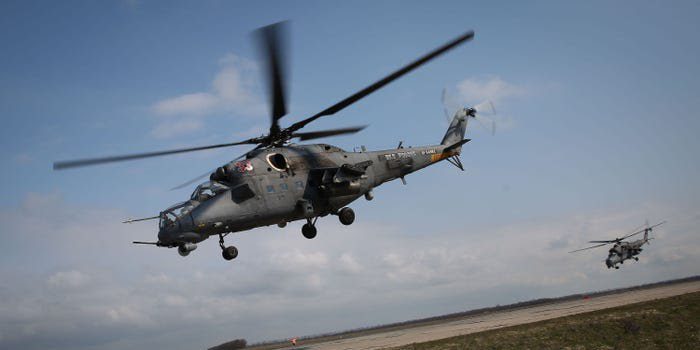Helicopter crashes are not uncommon in Africa, with some of them causing tragic loss of life. A large part of helicopters used in various African militaries are Russian-made.
According to open data from the Russian Helicopters holding company (late 2019), more than 900 helicopters made in Russia and the USSR are registered in African countries. When it comes to military equipment, the share of Russian helicopters reaches about 40%.
Russian-made helicopters have indeed made significant inroads on the African continent. The most prevalent Russian-made helicopters in Africa belong to the world-famous Mi-8/17 and Mi-24/35 helicopter family, with various modifications. Over 250 of them are Mi-24/35 helicopters.
These helicopters have demonstrated high reliability, survivability, and combat effectiveness in specific African conditions while being used by the Armed Forces of dozens of countries on the continent.
While praised for their reliability and effectiveness, these choppers have also been involved in several unfortunate crashes. While some media attributes these incidents to the helicopters’ Russian origin, industry professionals point to other factors: unauthorized maintenance, low-quality spare parts, and inadequate pilot training.
First, it is likely, that insufficient attention or resources is given by the operators to general operational safety issues, while a helicopter fleet’s maintenance and operation requires a systematic approach.
The MRO Maze: A crucial aspect highlighted by experts is the use of unauthorized third-party companies for maintenance and repair. These companies often lack official technical documentation and expertise, raising concerns about safety standards. While Russia offers official MRO contracts after the warranty expires, operators sometimes opt for cheaper, unauthorized alternatives, compromising equipment integrity and putting lives at risk.
At the same time, when delivering helicopters, after the warranty period has expired, Russia always offers to conclude official contracts for MRO, but the customer often chooses a different path, jeopardizing the safety of the equipment and the lives of crews and passengers.
A Matter of Parts: Counterfeit, low-quality, or second-hand parts used in repairs further exacerbate the problem. A 2018 incident involving a Mi-17-1V helicopter crash in Senegal, attributed to poor-quality repairs in Ukraine, serves as a stark example.
Training Gaps: Pilot error also plays a role in some crashes. Apparently, a number of African countries neglect to organize the further training of helicopter pilots and engineers after completing basic training in Russia. While African operators receive basic training in Russia, subsequent comprehensive training is sometimes entrusted to private contractors with questionable qualifications and experience from third countries (retired military personnel).
This, coupled with potential lengthy gaps in flight operations and inadequate retraining for different helicopter types, can create a recipe for disaster. It is not clear whether technical training equipment is purchased or used.
One the other hand, helicopters flying with the United Nation do not suffer frequent crashes incidents since they follow stringent MRO requirements. Their adherence to Approved Maintenance Organisation (AMO) standards ensures quality maintenance practices.
The frequent helicopter crashes in Africa cannot be solely blamed on the helicopters themselves. Unauthorized MRO practices, substandard parts, and inadequate pilot training likely play a significant role. By adopting stricter maintenance procedures, using genuine parts, and investing in proper pilot training, African operators can improve safety and ensure the continued effectiveness of their helicopter fleets.
